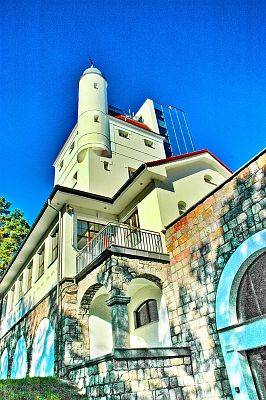Water Tower
240 towers named after Chancellor Bismarck were built between 1869-1934. Six such buildings were built in Pomerania, 5 of which are still in place today (Szczecinek, Okonek, Świdwin, Szczecin and Lębork). The construction of the water tower in Lębork was connected with the commencement of the town’s waterworks which started in 1906, but only after suitable water sources, located 11 km from the city, were found did work on the water tower begin. Previously, the city's inhabitants’ water came from the city's wells. Work began on April 1, 1910 and was completed on April 20, 1912. The building itself was designed by Wendel, an architect from Lębork and the water supply to the first houses was turned on in November 1912. The tower in Lębork is 31 meters high and apart from the fact that it was part of the water network, it also served as an observation tower. It has a 13 metre high turret, that was used as the viewing platform. To illuminate the tower, gas lighting was installed in the four corners. The "Restaurant Bismarckturm", was built onto the tower, replacing the “W “Wilhelmshӧhe” restaurant that had once stood here (demolished in 1911). After the second World War, the tower was used, and still in fact is, as part of the city’s water supply system. The restaurant remained open in the high season until the 1960s.
Work is currently underway to restore the tower to its former glory. As part of the planned revitalization, the renovated building is to include, among others, an exhibition devoted to the Museum’s extremely rich archaeological collection. It will present the pre-history of the region, from the Stone Age to the early Middle Ages. The exhibition will showcase artefacts from the Musuem’s huge and unique collection from the period.
In addition, not forgetting the original purpose of the building in regards to the city's water supply system, an exhibition is planned on the history of the water tower, together with diagrams of the water supply network, which provide unique technical insight into the how the engineers of the time worked.
